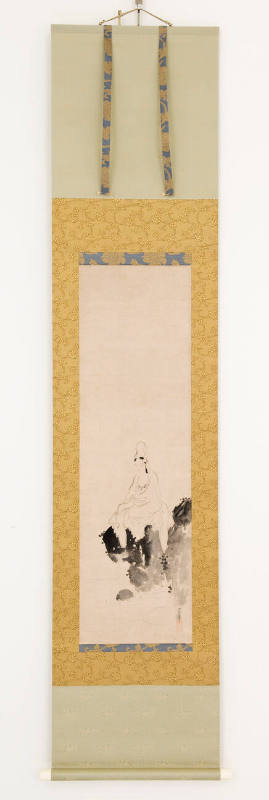White-Robed Kannon
Artist
Kanō Kōi
(Japanese, died 1636)
Datelate 16th - early 17th century
GeographyJapan
MediumInk on paper
Dimensions35 1/4 x 10 1/2 in. (89.6 x 26.6 cm)
ClassificationsPaintings
Credit LineGift of Aileen Miyo Ichiyo, 1982 (5009.1)
Object number5009.1
DescriptionSumi on paper mounted as a hanging scrollMounting: top and bottom: light blue brocade with large medallions of subdued gold; central borders tan silk with metalic gold calligraphy; insets and ribbons deep blue wtih small metalic floral pattern
The iconography is simple, she sits on a rocky ledge by the sae; she carries on objects, nor are any beside her (although her lotiform necklace may refer to two of her attributes, the lotus symbolizing her mercy and compassion, and the jewel which grants all wishes). Her hands (and madura) are hidden by her sleeves and her asana (or foot position) is also obscured, although the contours suggest that one foot is pendant in her characteristic posture of repose. The ethereal quality of the figure done in pale ink contrasts with the splashed satruated ink techique of the rocks. The swift stroke of the water is typical in such Zen icons, which are meant to suggest motion in the midst of stillness ans stillness in the midst of motion.
On View
Not on viewCollections
Kawanabe Kyōsai
early 20th century

















